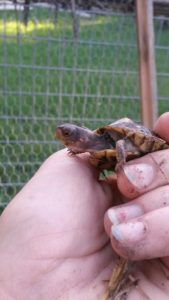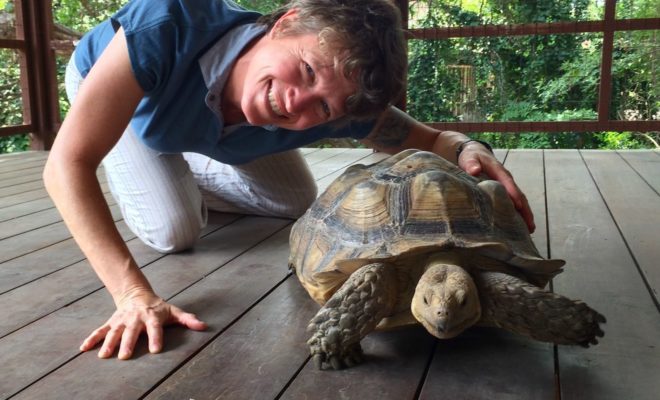Nature
Rescue Turtles and Tortoises in San Marcos Need Homes
You might not know that your new best friend could come outfitted with its own shell for a home. You might not even know that you needed a new best friend. Further, choosing a new best friend with a shell might mean giving a slow-moving, grass-eating reptile a new lease on life. Enter, Central Texas Tortoise Rescue, the perfect place to find turtles or tortoises to be your new best friend.
Located in San Maros, Central Texas Tortoise Rescue was founded to support the ever-growing homeless and abandoned turtle and tortoise population. Turtles and tortoises can live much longer than many realize. The sulcata tortoise, for example, can live for over 70 years, some even more than 100 years. They also grow. And grow. And grow.
Too often, sulcatas or other large breed tortoises are taken in as small hatchlings (see pictured), when they are small enough for an aquarium, and then abandoned, sold, or given away when they soon are too big for the aquarium. Sulcatas, for example, can weigh as much as 100 pounds or more and soon need outdoor space to roam and graze. They are not suitable for indoor life for very long, and some pet owners fail to prepare for an alternative. Ideally, tortoises need a large outdoor space with an enclosure they cannot dig out of and a hut or cave to burrow into. Providing them a cool, dark place to hide and rest deters them from digging out.

Photo: Facebook/Central Texas Tortoise Rescue
And by the way, tortoises are different from turtles. Turtles are water-capable strong swimmers, whereas tortoises are land-dwellers with feet more suited for the desert than the pond. Tortoises need a water supply but live and graze on land. As herbivores, they thrive on grasses and hays. While different, turtles share one important thing in common with tortoises-they too are often given up. As a result, there are many, many turtles in need of proper and capable homes.
Central Texas Tortoise Rescue is aware of the ever-growing problem of pet breeders that continue to flood the market with hatchlings. Like dogs and cats (whose homeless population and euthanasia rate is very high) homeless turtles and tortoises are growing in number.
Krista McDermid, the Executive Director at Central Texas Tortoise Rescue states, “We are here to serve people and their companion animal tortoises, but we really encourage leaving wild things wild, we don’t want people finding wild, native tortoises and “rescuing” them. Our number one priority is making sure that every captive chelonian can live as long and happy a life as possible, in as close to a natural environment as possible, and we love helping people who are trying to provide the right kind of care for their shelled family members.”

Photo: Facebook/Central Texas Tortoise Rescue
While it is never a good idea to impulsively adopt a pet, we do hope you will consider adopting rather than buying a pet should you be in the market. Whether it be a dog, cat, or reptile, there are rescue groups available throughout Texas hoping for good, responsible and loving pet owners to come check out some of the available animals in need of homes. Remember that any pet requires the right environment, attention, and vet care. A pet should be a lifetime responsibility, and the pet owner should consider the lifespan of the pet. For tortoises, this can mean making accommodations in a will if your pet outlives you, which is a real possibility.
Check out Central Texas Tortoise Rescue at https://texastortoiserescue.com/ to see available turtles and tortoises, or to make a donation.


